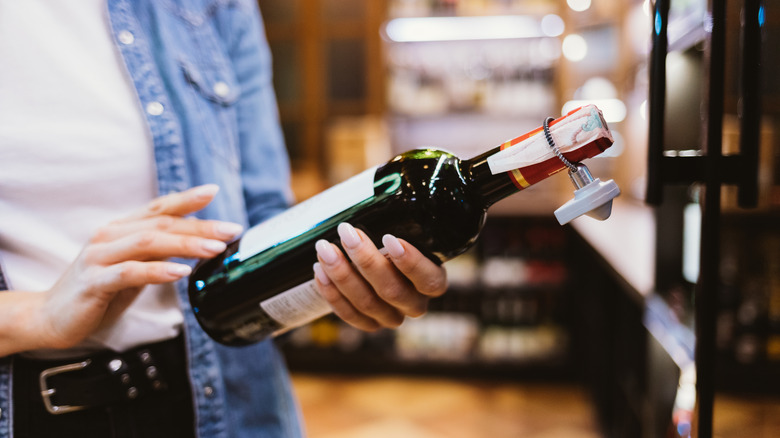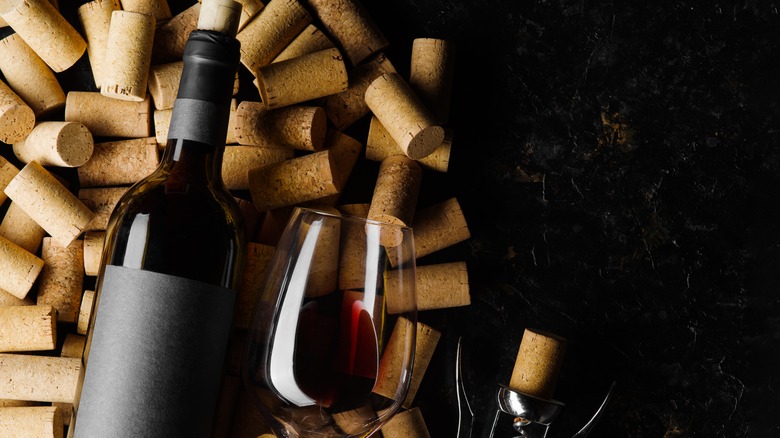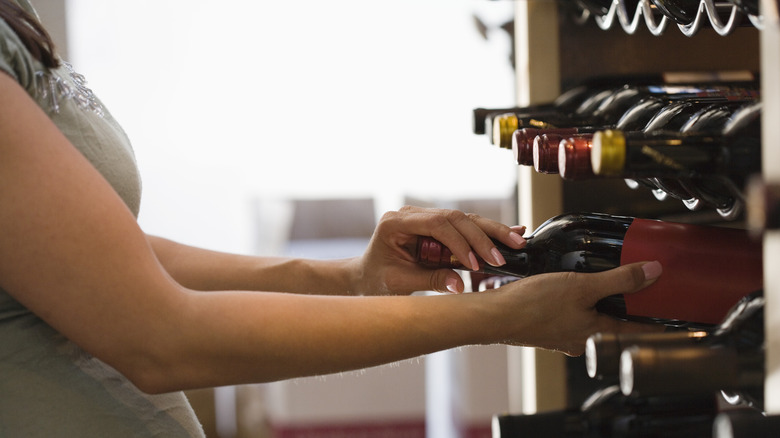You Might Actually Want To Avoid Vintage Wine From Grocery Stores
Nothing beats the convenience of grabbing a nice bottle of wine from your local grocery store while stocking up on food and other essentials. And while laws vary wildly from state to state, per Insider, throughout the U.S. alcohol is readily available at numerous food stores. Even better, you may be able to score a quality vintage bottle depending on the location.
In this case, shoppers must understand what makes a vintage wine to ensure they make an excellent selection. Marketview Liquor explains that a wine's vintage indicates the year during which grapes were harvested. In this case, the wine will have a date listed on the bottle, whereas non-vintage wine labels have no date. When it comes to single-vintage wines, 75% to 95% of the grapes used must be from the same crop. Using grapes from the same crop can result in better quality, as growing conditions will be uniform. However, even the best vintage wines can fall victim to numerous hazards before they wind up on your dinner table.
Common threats to wine quality
OC Wine Society provides some insight into wine flaws and faults. A flaw is a minor deficiency that negatively impacts flavor, color, or scent. While disheartening, wine flaws have a limited impact on the bottle and do not render it unpalatable. Conversely, a wine fault is so sinister that the bottle must be banished to the nether regions of your recycling bin. Both flaws and faults have a wide range of causes, many of which occur during the winemaking process. However, problems can arise in other areas as well.
Environmental issues are a major factor in decreased wine quality. For instance, the taste of white wine can be drastically altered when clear bottles are exposed to sunlight on a regular basis. The temperature at which wine is stored is another issue to consider. Excessively hot environments or uncontrolled temperature variations do no favors to wine, especially when bottles are subjected to these factors on an extended basis. Accordingly, that enticing vintage you see on a grocery store shelf might be hiding an unpleasant surprise.
The problem with grocery stores and vintage wine
Proper storage is a significant concern when it comes to preserving the inherent characteristics of vintage wine. As illustrated by retailer JJ Buckley, long-term wine storage requires very specific conditions to maintain quality. In terms of light exposure, storage locations must be dark and protected from direct sunlight. Temperature is another important factor, with a consistency of 55 degrees Fahrenheit considered ideal for avoiding defects. Humidity levels are also important, as they stop the cork from drying out, which can potentially allow air into the bottle. To avoid this, humidity levels should be kept between 60% and 70%.
Meeting these conditions is often easier said than done. While some wine boutiques and liquor stores are generally designed to replicate ideal storage conditions, your local grocery store might not have the same luxury. Issues with humidity, temperature, and light exposure are all likely to arise during storage. The longer a wine sits on grocery store shelves, the worse the conditions can become, which may be the case with certain vintage varieties. Accordingly, stick to specialty stores when searching for a vintage bottle.


